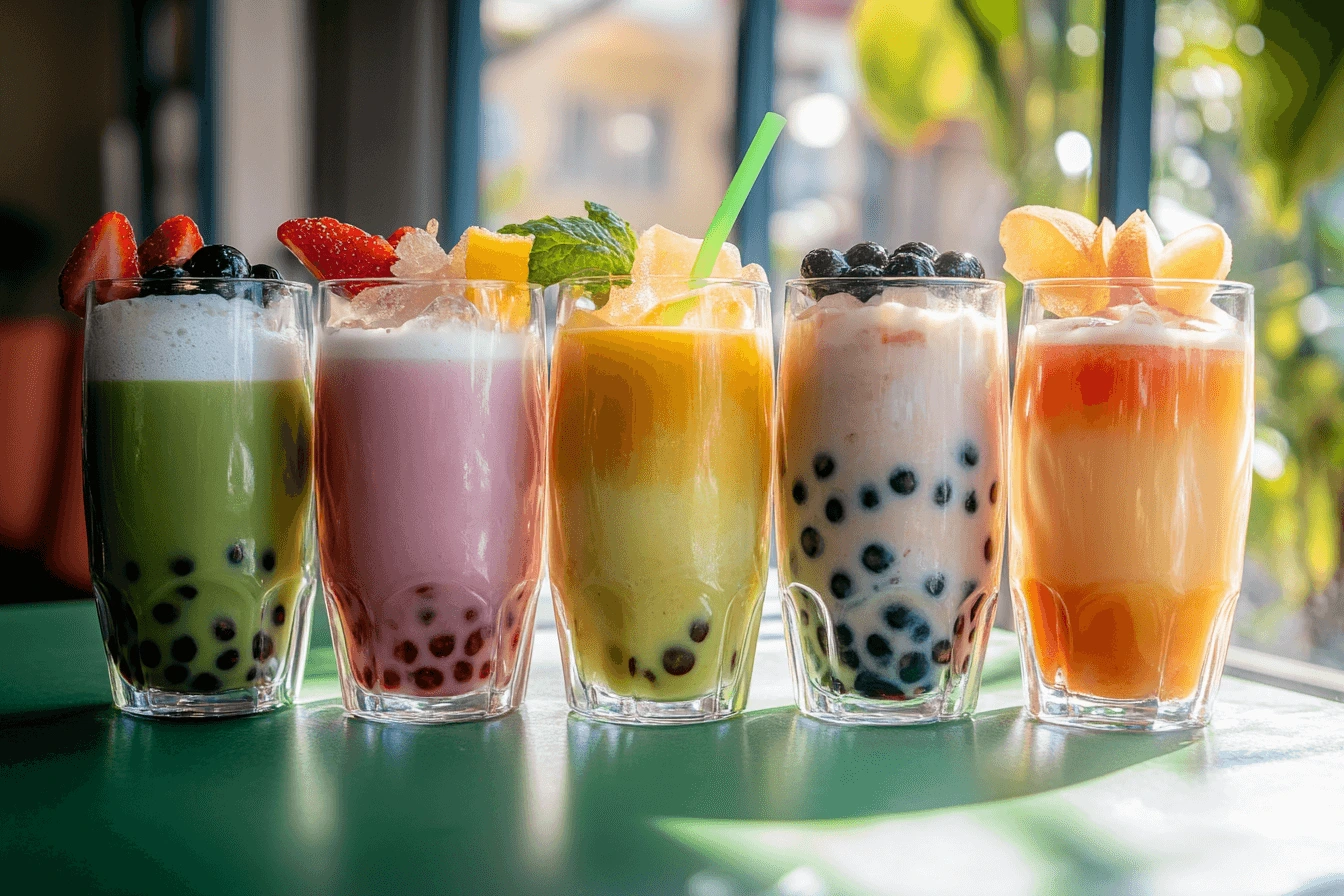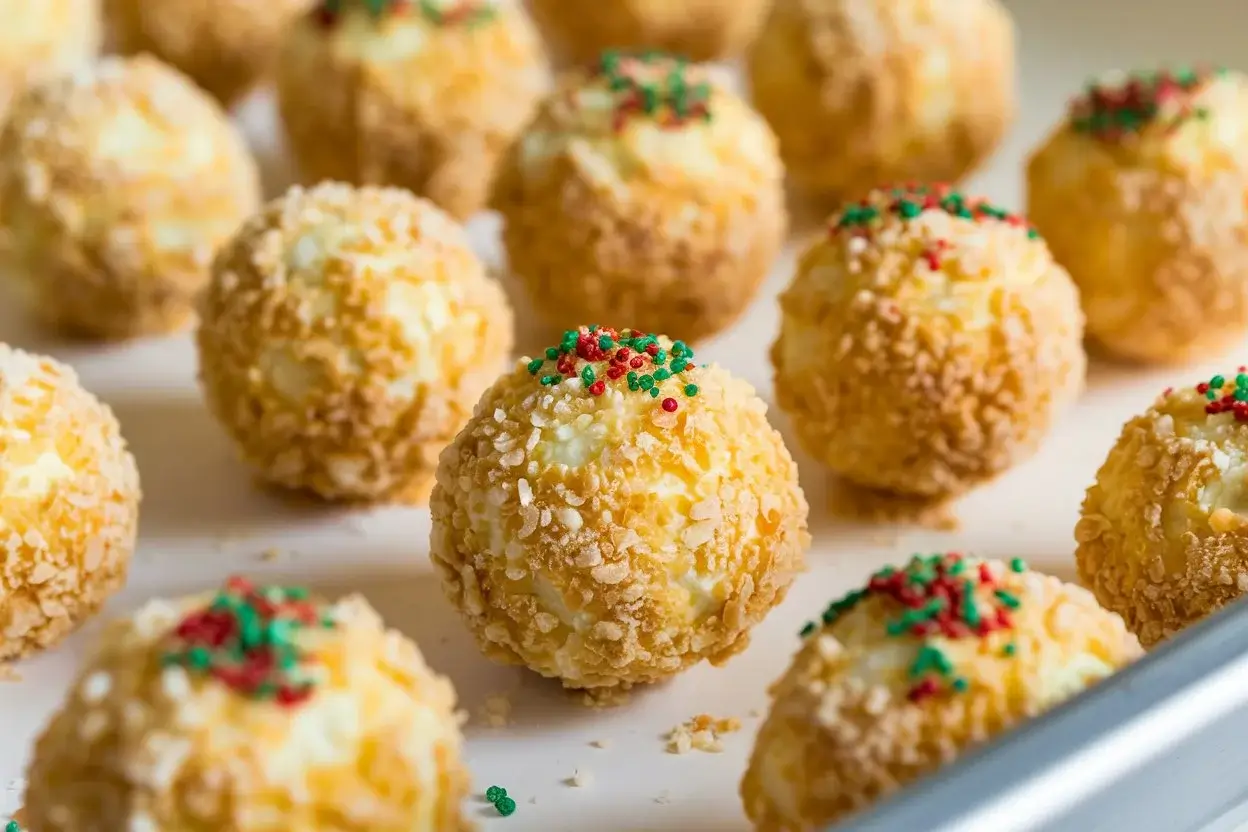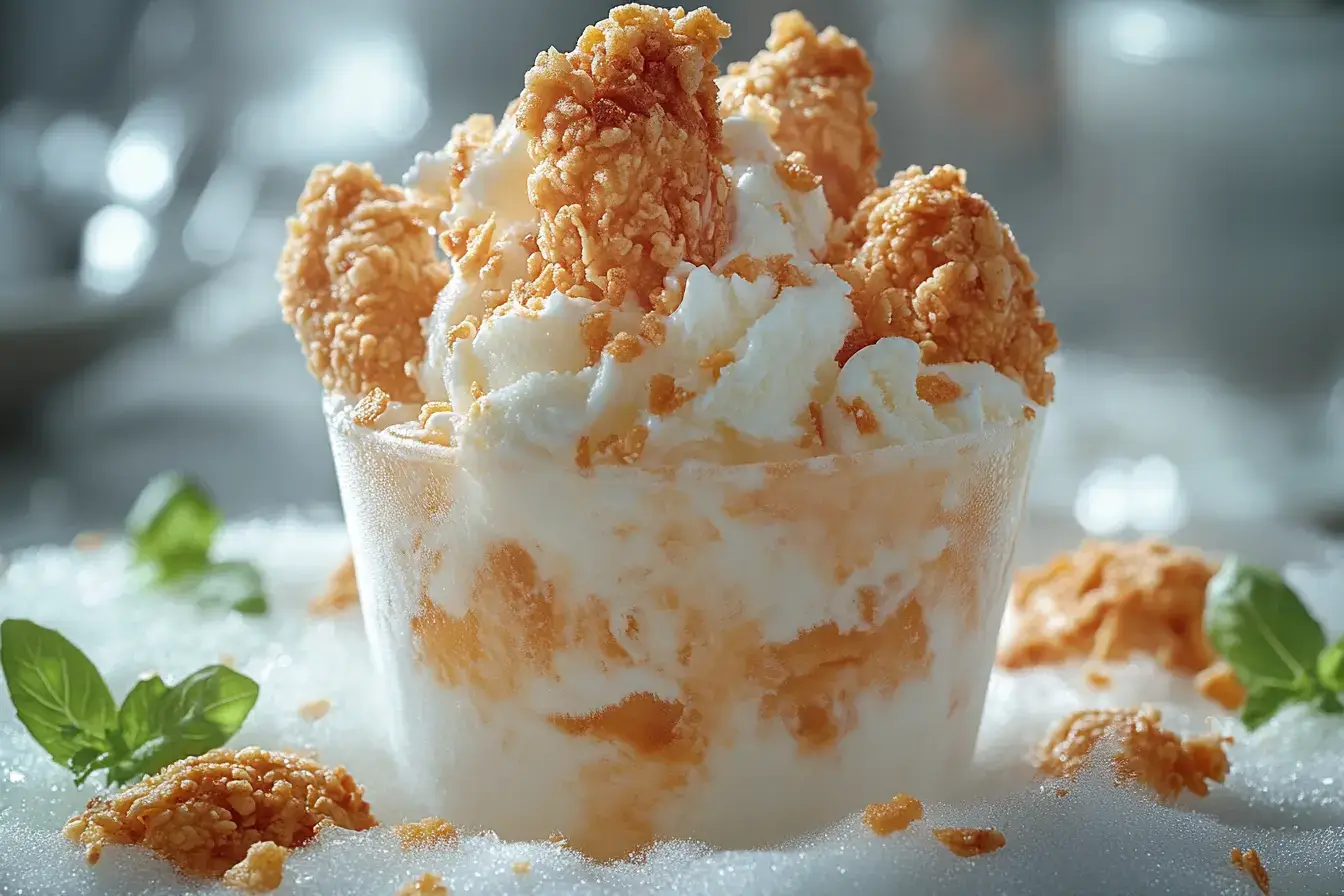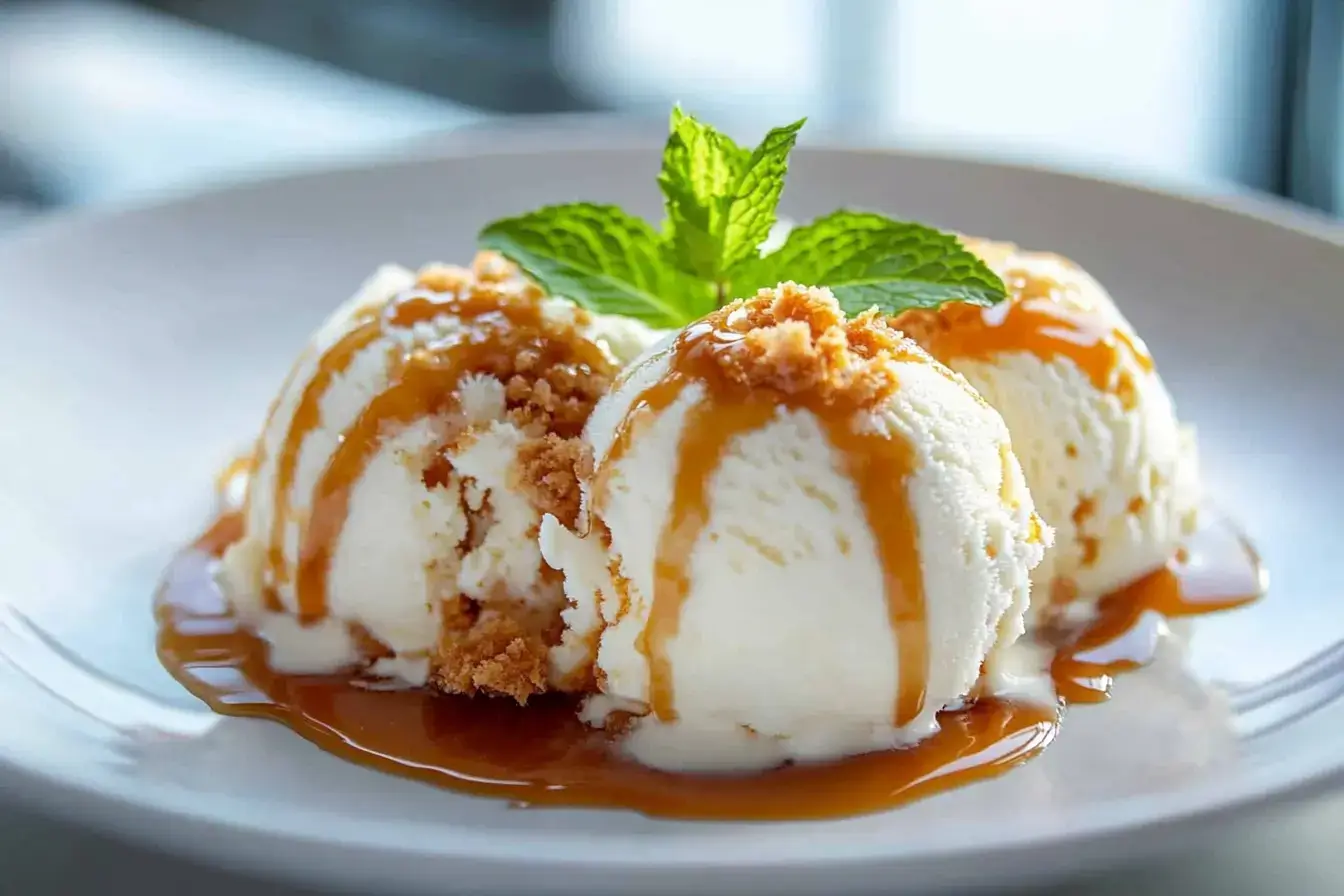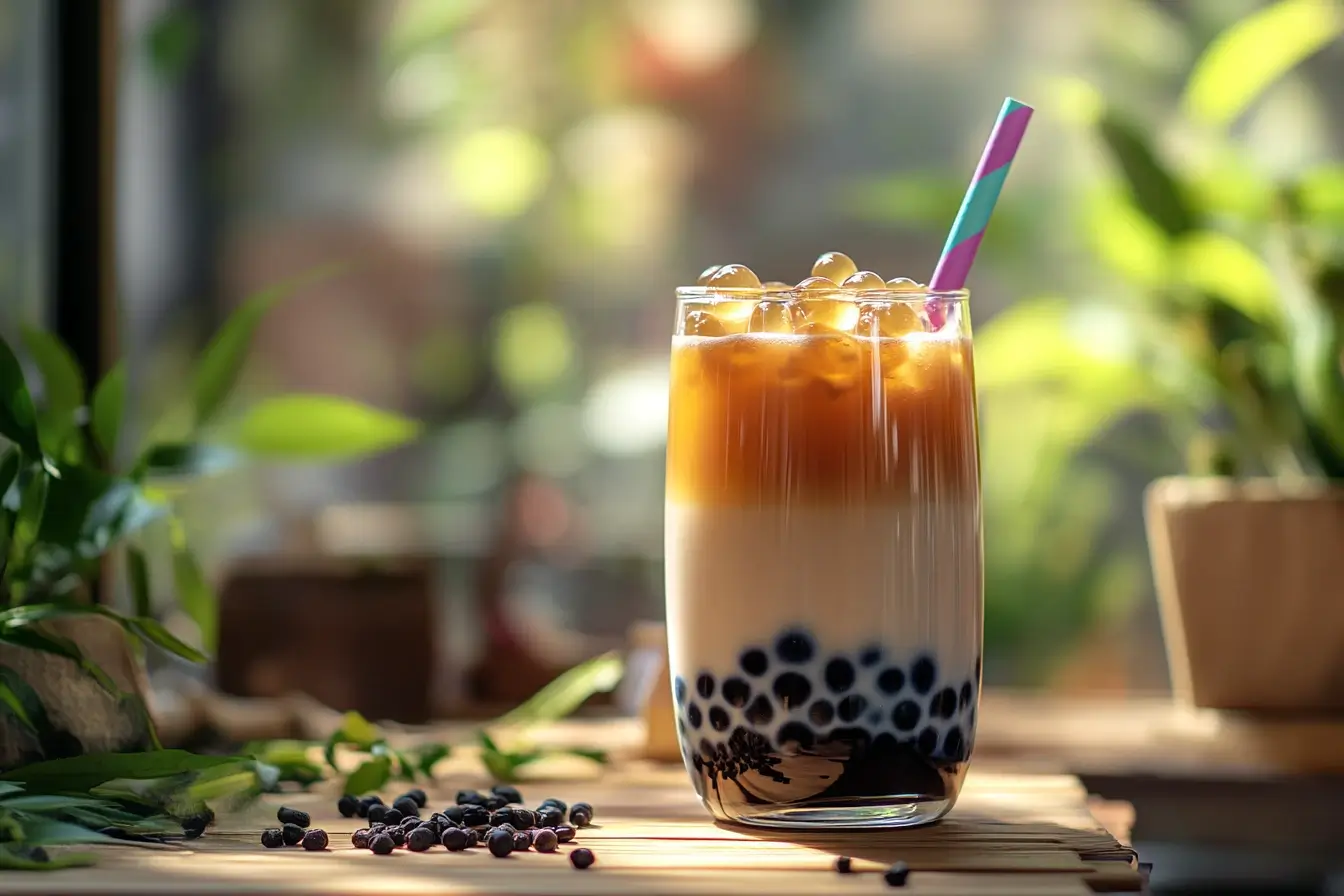
What is in a Bobba? Discover the Ingredients and Recipe
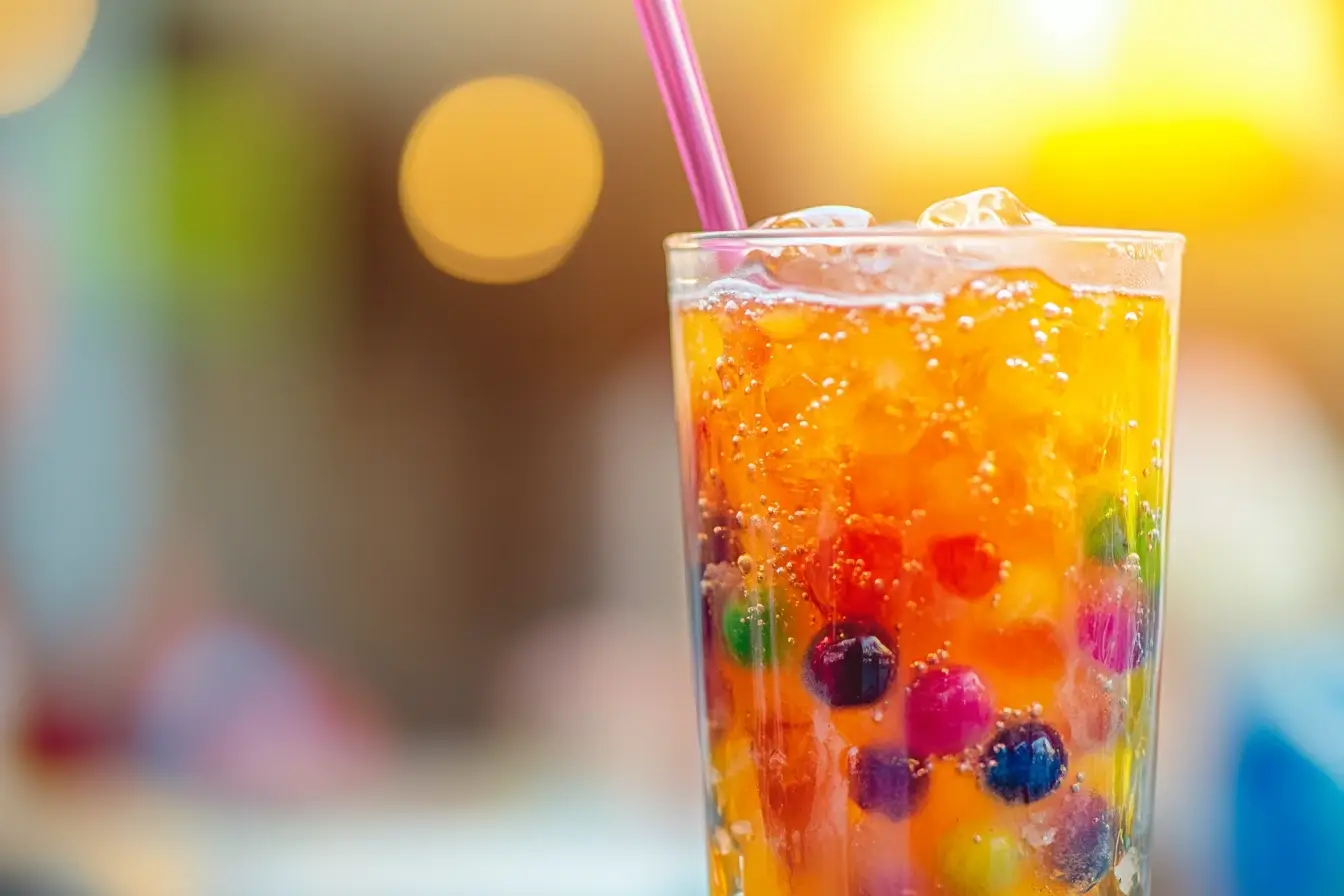 What is in Bobba? A Guide to Bubble Tea Ingredients
What is in Bobba? A Guide to Bubble Tea Ingredients
Boba tea, often called bobba or bubble tea, is a beloved drink enjoyed by millions worldwide. Its unique combination of chewy tapioca pearls and refreshing tea offers a delightful experience that many can’t resist. But what makes bobba so popular, and why has it gained such a significant following? One answer lies in its versatility, as well as its ability to be customized according to individual preferences. However, if you’re new to bobba tea, you may wonder what ingredients are in it, or how exactly to make your own at home.
Even though this drink originated in Taiwan in the 1980s, it has spread globally, and with it, the recipe has evolved. Today, you can find countless variations of bobba tea, with different flavors, ingredients, and methods of preparation. Because of this, it can sometimes be overwhelming to figure out exactly what goes into this delightful drink. In this guide, we will break down the essential ingredients, how to make bobba tea at home, and tips for customizing your own version to suit your preferences.
What Exactly is Bobba?
Before diving into the ingredients, let’s take a moment to understand what bobba really is. For many, bobba tea is synonymous with fun drinks, quirky shops, and unique flavor combinations. But at its core, bobba tea consists of two main components: the tea base and the tapioca pearls (often referred to as boba). These chewy pearls give the drink its signature texture, while the tea offers the refreshing and flavorful base.
Bobba can be served in various ways, including as a milk tea or fruit tea, with options to add sweeteners, milk, or milk alternatives. The drink has not only become a favorite in Asia, but it has also gained popularity in Europe, North America, and beyond. Because of this, people often see bobba tea as a cultural crossover drink that adapts to fit the tastes and preferences of people all over the world. Discover more about the meaning and origins of bobba tea here meaning of bobba tea.
Whether you are a seasoned fan or trying it for the first time, understanding what goes into this delightful drink can help you appreciate it even more. So, let’s dive deeper into what makes up a bobba tea and how you can create your own version at home!
What is in a Bobba? The Essential Ingredients
Now that we’ve introduced the basics, let’s explore the key ingredients that make up a delicious bobba tea. These ingredients work together to create the signature taste and texture that has captivated so many.
1. Tapioca Pearls (Boba)
At the heart of every bobba drink, you’ll find chewy tapioca pearls, often simply referred to as boba. For those who don’t know, tapioca pearls come from cassava starch, derived from the cassava root. This ingredient gives the pearls their chewy texture, and it also makes them naturally gluten-free. Although these pearls are typically black, you can find them in a variety of colors and flavors, including pastel-colored ones infused with fruit.
Tapioca pearls, once cooked, become soft and chewy, providing a fun contrast to the liquid tea. This texture is one reason why bobba tea is so popular—it’s not just a drink, but also an interactive experience, as you chew the boba while drinking the tea.
How to Make Them: To make tapioca pearls, manufacturers mix tapioca starch with water to create a dough, which they roll into small balls. Boiling these balls for 15-20 minutes gives them the chewy texture. Moreover, the black color that many associate with traditional bobba comes from the addition of caramel or brown sugar to the dough.
Cooking the Pearls: To cook tapioca pearls at home, boil them in water for about 15-20 minutes. After you cook them, soak them in a syrup or sweetener to maintain their texture and flavor. Some people prefer simple syrup, while others use flavored syrup, such as honey or brown sugar, to enhance the taste.
2. Tea Base
The tea base serves as the foundation of bobba tea, providing the main flavor. You can select from several teas, depending on your preference. For example, herbal and fruit teas explore the benefits of fruit teas are popular caffeine-free alternatives that add a refreshing twist to bobba.
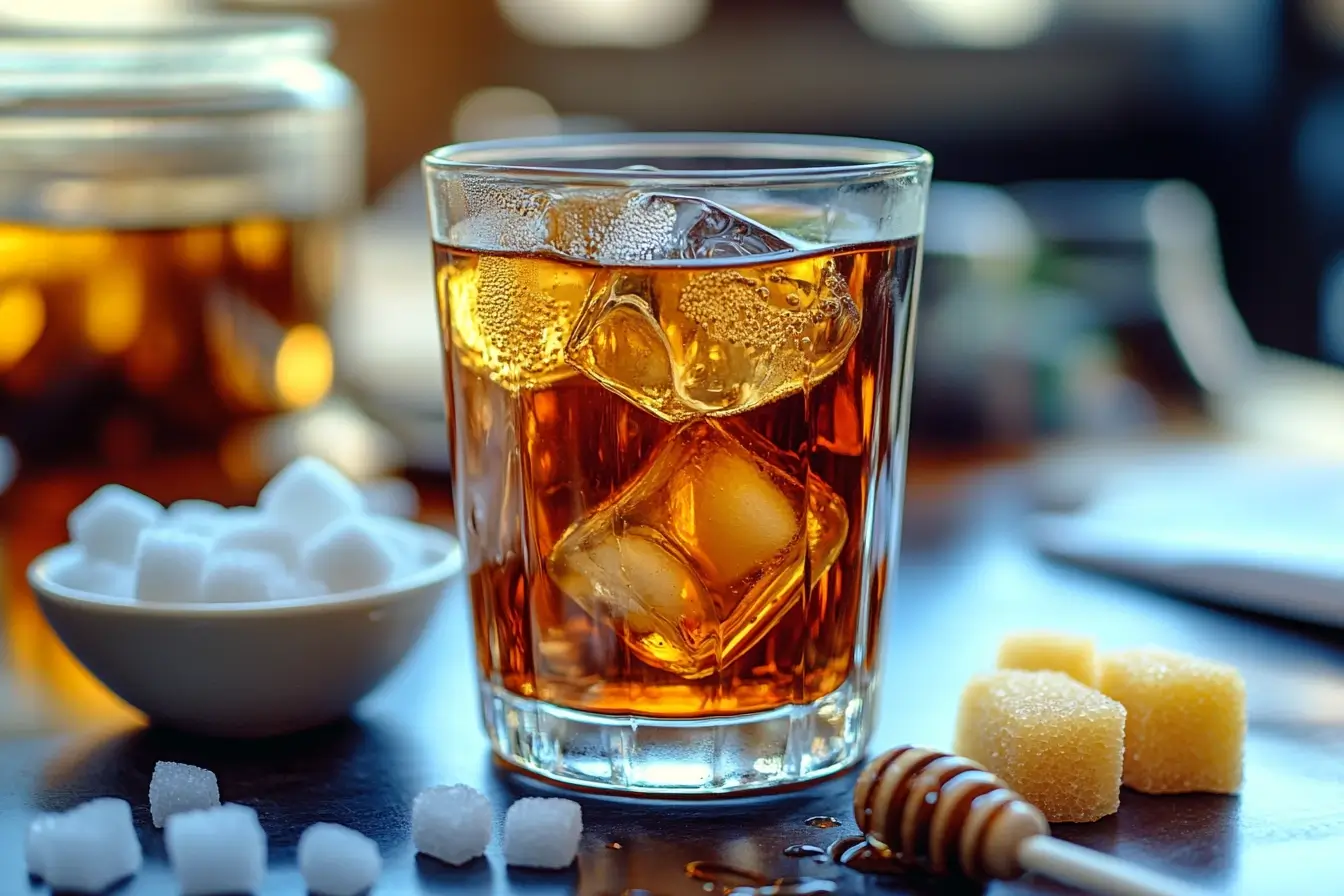
- Black Tea: Black tea is often the base for traditional bobba milk tea, as it has a robust flavor that pairs well with milk and sweeteners. Additionally, black tea offers rich antioxidants and caffeine, making it an energizing option.
- Green Tea: For those who prefer a lighter flavor, green tea is a popular choice. Its delicate, grassy taste pairs well with fruit flavors or milk alternatives. As a bonus, green tea provides several health benefits, including boosting metabolism.
- Herbal and Fruit Teas: If you want a caffeine-free option, herbal or fruit teas work well as the base. These teas come in a variety of flavors, such as jasmine, hibiscus, or peach, and offer a refreshing alternative to traditional tea bases. Furthermore, herbal teas often provide calming or digestive benefits, making them a great choice for an evening bobba tea.
Once you’ve brewed the tea, chill it before assembling your bobba tea. This way, the drink remains cool and refreshing, ideal for warm weather or as a mid-day pick-me-up.
3. Milk or Milk Alternatives
One of the defining characteristics of bobba tea is its creamy texture, which results from adding milk or a milk alternative to the tea. Because milk plays such an important role, it’s essential to choose the type of milk that best suits your taste and dietary preferences.
- Whole Milk: The classic choice, whole milk provides a rich and creamy texture that balances the bold flavors of the tea.
- Non-Dairy Alternatives: For those who are lactose intolerant or vegan, non-dairy options like almond milk, oat milk, soy milk, or coconut milk are popular alternatives. Additionally, each of these options brings its own unique flavor and creaminess to the drink. For example, coconut milk adds a tropical flair, while oat milk creates a thick and smooth consistency.
By experimenting with different types of milk, you can customize the level of creaminess in your bobba tea to suit your preferences. Furthermore, milk alternatives can offer additional health benefits. For instance, almond milk provides a great source of vitamin E, while oat milk delivers extra fiber.
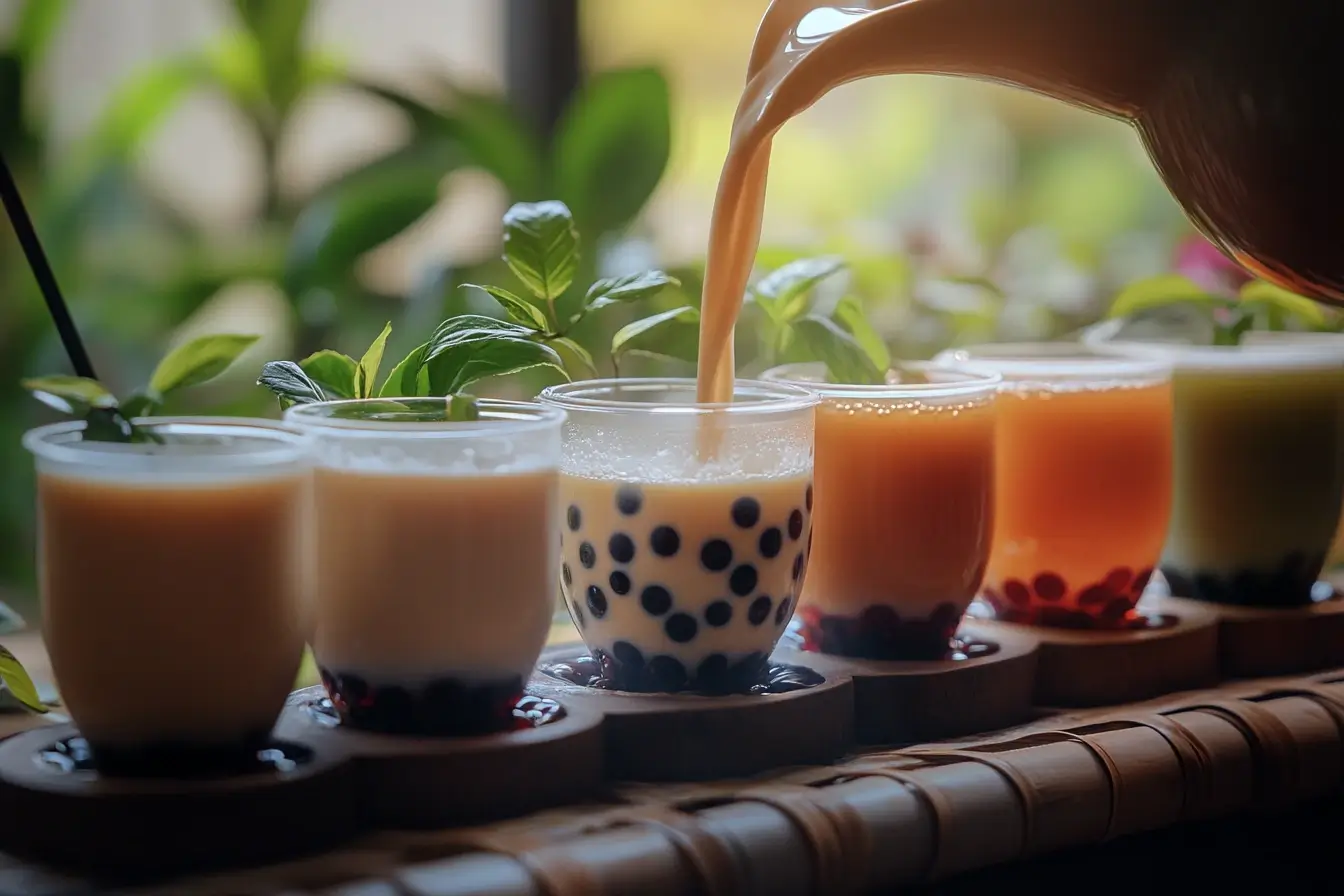
4. Sweeteners
No bobba tea is complete without a bit of sweetness. In fact, sweeteners play a crucial role in balancing the flavors of the tea, milk, and tapioca pearls. While it’s true that sweetness levels can vary depending on personal taste, some popular sweeteners used in bobba tea include:
- Simple Syrup: Made from equal parts sugar and water, simple syrup is the most commonly used sweetener in bobba tea. Because of its consistency, it blends smoothly with the tea, ensuring even sweetness throughout the drink.
- Honey: For a natural and slightly floral sweetness, honey is a great option. It also pairs well with both black and green teas, adding depth to the flavor.
- Brown Sugar: Brown sugar often sweetens both the tea and the tapioca pearls, imparting a rich, caramel-like flavor to the drink. This type of sweetness is especially popular in brown sugar bobba tea, where the tapioca pearls simmer in brown sugar syrup before adding them to the tea.
- Sugar-Free Alternatives: If you’re looking to reduce your sugar intake, opt for sugar-free sweeteners like stevia, monk fruit, or erythritol. These options allow you to enjoy the sweetness without the extra calories.
Sweeteners can be adjusted according to taste, so feel free to experiment with different amounts until you find the perfect balance.
5. Ice
Though it may seem simple, ice serves as a vital ingredient in bobba tea. It keeps the drink cool and refreshing, especially on a hot day. Depending on your preference, adjust the amount of ice to make the drink as chilled as you like. Without ice, the drink may lose its refreshing quality quickly, especially if you’re drinking it in warm weather.
How to Make Bobba Tea at Home: Step-by-Step Recipe
Now that you know what’s in a bobba, it’s time to make your own! Making bobba tea at home is easier than you might think, and it allows you to customize every aspect of the drink to your liking. Follow this homemade bobba tea recipe guide bobba tea recipe for a simple and delicious version to try at home.
Ingredients:
- ½ cup of tapioca pearls (bobba)
- 2-3 tea bags (black tea, green tea, or fruit tea)
- 1 cup of milk or milk alternative (almond, oat, soy, or coconut milk)
- 2 tablespoons of sugar, honey, or sweetener
- 4 cups of water (for boiling and brewing)
- 1 cup of ice
Step-by-Step Instructions:
1. Cooking the Tapioca Pearls
First, bring 4 cups of water to a boil in a large pot.
Next, add ½ cup of tapioca pearls to the boiling water and stir to prevent them from sticking.
Allow the pearls to cook for 15-20 minutes, stirring occasionally.
Once the pearls soften and become chewy, drain them and transfer them to a bowl. After that, toss them with 1 tablespoon of sugar or honey to sweeten and prevent sticking.
2. Brewing the Tea
While the pearls cook, boil 2 cups of water and add 2-3 tea bags of your choice.
Let the tea steep for 5-7 minutes, depending on how strong you want the flavor.
Once the tea is ready, remove the tea bags and allow the tea to cool. Additionally, if you want to speed up the process, refrigerate the tea to chill it faster.
3. Assembling the Bobba Tea
In a tall glass, start by adding ¼ cup of cooked tapioca pearls to the bottom.
Then, fill the glass with ice to keep the drink cold.
Pour the brewed tea into the glass, leaving some room at the top for milk.
Add ¼ to ½ cup of milk (or a milk alternative), depending on how creamy you prefer your drink.
Finally, stir the drink gently and enjoy with a wide straw to sip up the chewy pearls.
This recipe is easy to adjust based on your preferences. For example, you can experiment with different types of tea or milk to create a variety of flavors.
Variations of Bobba Tea
Once you know what is in a bobba, you can start to experiment with various flavors and styles. Because of this, the beauty of bobba tea lies in its versatility, so feel free to get creative! Below are some popular variations to inspire your next drink:
1. Matcha Bobba Tea
Matcha, a finely ground green tea powder, is known for its vibrant green color and earthy flavor. To make this matcha bobba tea, whisk 1-2 teaspoons of matcha powder with a little hot water until smooth. Afterward, add this mixture to brewed green tea or simply mix it with milk and cooked tapioca pearls for a creamy, antioxidant-rich drink.
2. Fruit Bobba Tea
For a tropical twist, replace the tea with fruit juice. Mango, lychee, and passionfruit juices are popular choices. In particular, fruit lovers will appreciate the refreshing taste of this version. Combine the juice with the cooked tapioca pearls and ice for a refreshing, caffeine-free bobba tea.
3. Brown Sugar Bobba Milk Tea
For a richer flavor, try brown sugar bobba. After cooking the pearls, simmer them in brown sugar syrup to create a deep, caramel flavor. Instead of tea, simply pour milk over the brown sugar-coated pearls to create a decadent dessert drink. This variation is especially popular among those who enjoy sweeter drinks.

4. Chai Bobba Tea
Chai tea, with its warm spices like cinnamon, cardamom, and ginger, creates a spiced variation of bobba tea. Use brewed chai tea as the base, then combine it with milk and tapioca pearls for a cozy drink. Moreover, this variation adds a warm, comforting touch to your bobba tea. It’s perfect for cold days when you want something soothing.
5. Coffee Bobba Tea
If you’re a coffee lover, why not combine two of your favorite drinks? Use strong brewed coffee or espresso as the base for your bobba. The bitterness of the coffee pairs well with the sweet, chewy pearls and creamy milk, creating a bold and unique flavor. As a result, coffee bobba tea is an excellent option for those who want a caffeinated version of the drink.
Health Benefits of Bobba Tea Ingredients
Bobba tea is often enjoyed as a sweet treat, but some of its ingredients also offer health benefits. Knowing what is in a bobba helps you make informed choices about how you enjoy the drink. Below are some of the potential health benefits:
1. Tapioca Pearls
Tapioca pearls come from cassava root, which is gluten-free. This makes them a suitable option for those with gluten sensitivities. However, keep in mind that they are high in carbohydrates and calories, so moderation is key.
2. Tea
Both black and green teas are rich in antioxidants, which support heart health and improve focus. Green tea, in particular, is known for its ability to boost metabolism and help in weight management. Moreover, herbal teas offer other benefits, such as calming properties or digestive support.
3. Milk and Milk Alternatives
Dairy milk is a good source of calcium and vitamin D, which are essential for bone health. Plant-based milk alternatives like almond, oat, and coconut milk offer a range of benefits, including healthy fats, vitamins, and minerals. For example, almond milk provides a great source of vitamin E, while oat milk delivers extra fiber.
4. Natural Sweeteners
If you use natural sweeteners like honey, you can benefit from the antibacterial and anti-inflammatory properties honey provides. It’s a healthier alternative to refined sugar. Additionally, agave nectar and stevia are also natural options that offer sweetness without spiking blood sugar levels.
Choosing natural sweeteners over refined sugar can help reduce the overall calorie count of the drink, making it a more health-conscious choice.
Frequently Asked Questions (FAQs)
1. What is in a bobba pearl?
Bobba pearls, also known as tapioca pearls, are made from tapioca starch extracted from the cassava root. You boil them until they become soft and chewy, and they are typically sweetened with sugar or syrup after cooking.
2. Can I make bobba tea without tea?
Absolutely! Instead of tea, you can replace traditional tea with fruit juices, smoothies, or even milk to create a caffeine-free version of the drink. This is a great option for kids or those who don’t drink tea.
3. Is bobba tea healthy?
Bobba tea can be a part of a balanced diet when consumed in moderation. The tea base, especially if it’s green or herbal, provides antioxidants, while milk and milk alternatives can add essential nutrients. However, the sugar content and the high carbohydrates in tapioca pearls should be kept in mind.
4. How do I store bobba pearls?
It’s best to enjoy bobba pearls fresh, but if necessary, you can store them in a simple syrup solution in the refrigerator for up to 24 hours. When ready to use them, reheat the pearls in warm water to bring back their chewy texture.
Conclusion:
Now that you know what is in a bobba, it’s time to make your own! From chewy tapioca pearls to flavorful tea and creamy milk, bobba tea offers endless possibilities for customization. By making it at home, you have complete control over the ingredients, allowing you to adjust everything from the sweetness to the type of milk or tea you use. Whether you prefer traditional milk tea or want to experiment with matcha or fruit flavors, the versatility of bobba tea ensures there’s something for everyone.
Take this recipe, have fun experimenting, and create your own delicious bobba tea. Be sure to share your creations with friends and family, and don’t forget to follow us for more tasty recipes and tips!

